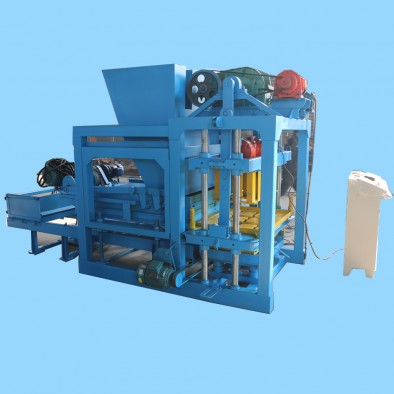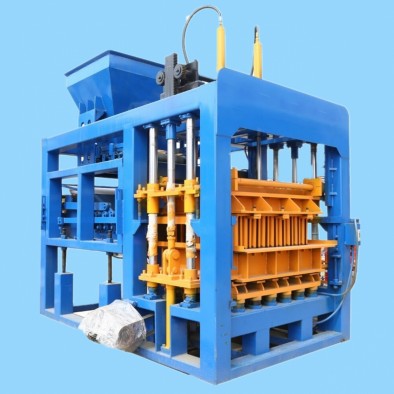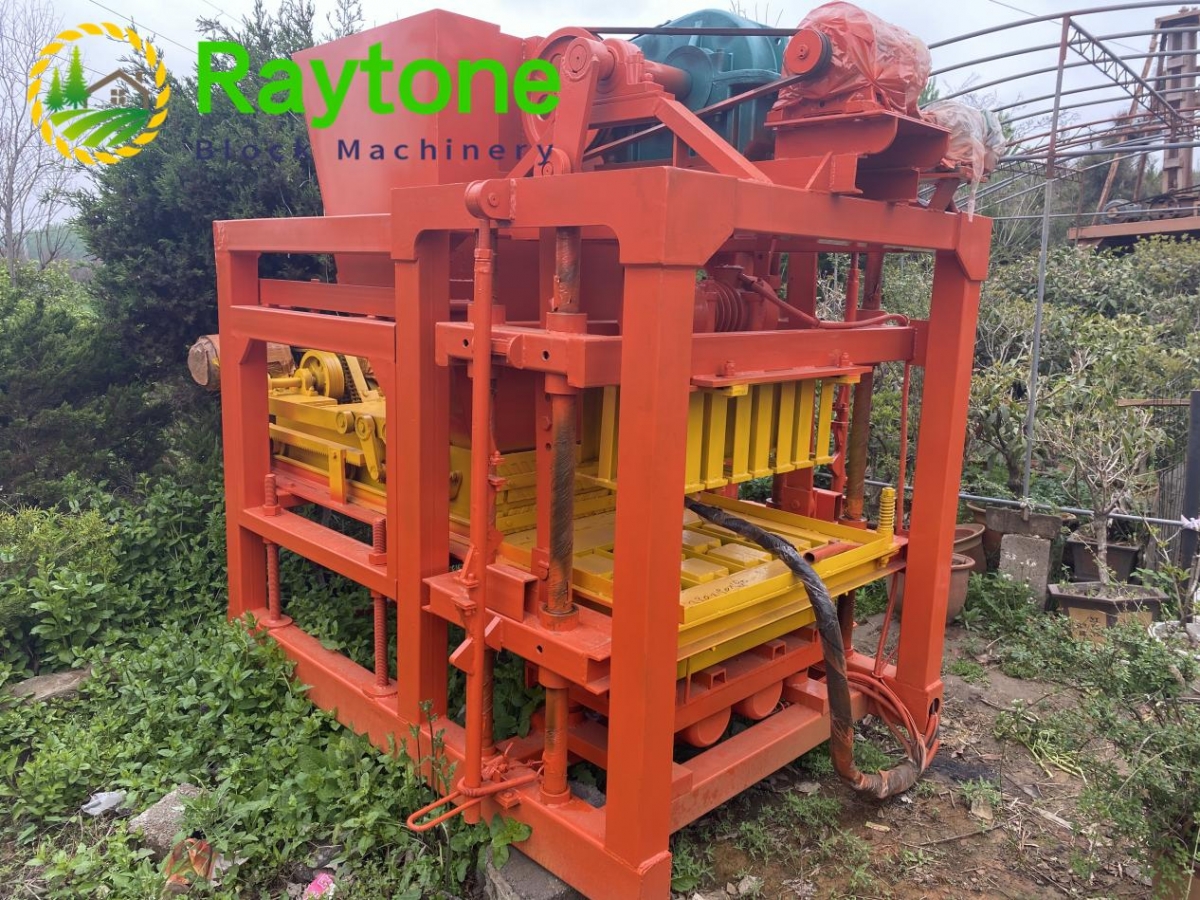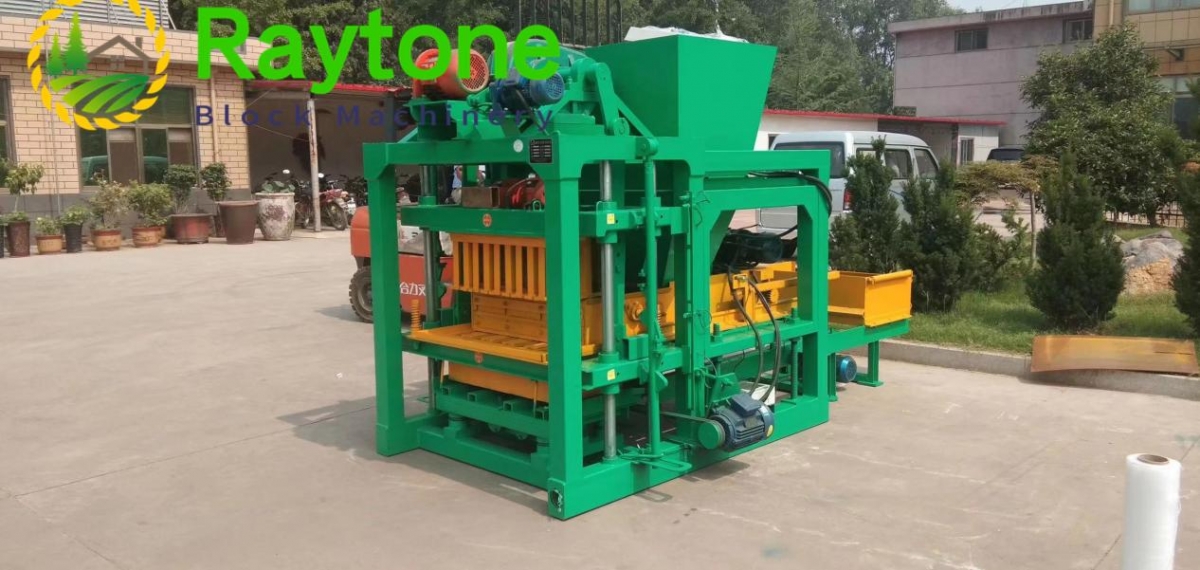- 28
- 2月
What are the factors that affect the production capacity of a block making machine?
RAYTONE specialize in producing various types of block making machines including fully automatic, semi-automatic, and manual machines. Our machines are capable of producing a wide range of blocks such as hollow blocks, solid blocks, interlocking blocks, and pavers. They are designed to be user-friendly, efficient, and cost-effective, providing our customers with a reliable and profitable solution for their business.
Our block making machines are made of high-quality materials and components, ensuring durability and stability in performance. They are also equipped with advanced features such as hydraulic systems, vibration systems, and electronic controls to ensure the highest level of precision and speed in production. Furthermore, we also offer customization services to meet specific requirements of our clients.
Apart from the machines, we also provide a complete set of auxiliary equipment to assist our clients in the production process. This includes batchers, mixers, stackers, and mold boxes. We also offer training and technical support to our customers to ensure they are able to operate our machines effectively.
Our block making machines have been sold to many countries and regions including Africa, South America, and Southeast Asia. We have a strong reputation for delivering reliable and efficient machines, as well as providing excellent customer service. We are committed to continuously improving and innovating our products to meet the ever-changing demands of the market.

The revolutionary Block Machine is a groundbreaking solution that combines efficiency and automation to completely transform traditional block manufacturing processes. With its advanced technological capabilities, this machine greatly reduces the manual labor and time required for block production. Its automated features ensure a precise and consistent production process, resulting in high-quality blocks every time. Whether used for construction, landscaping, or other applications, the Block Machine delivers unparalleled efficiency and reliability. Say goodbye to labor-intensive and time-consuming methods – the future of block manufacturing has arrived.
Our cutting-edge block machine offers the latest in design and functionality, making it the perfect choice for all your block-making needs. With advanced features such as precision mold technology, adjustable brick sizes, and automatic stacking, our machine allows for faster production and improved quality control. Plus, with its sleek and modern design, it will be a standout addition to any production facility. Say goodbye to outdated and inefficient machines, and say hello to the future of block-making with our cutting-edge design.

Block making machine, also known as brick making machine, is a device that produces concrete blocks or bricks in various shapes and sizes. It plays an important role in the construction industry by providing a cost-effective and efficient solution for producing building materials. With the advancement of technology and the increasing demand for sustainable building materials, block making machines have evolved to become more versatile and eco-friendly. In this article, we will delve deeper into the functionalities and benefits of block making machines and explore how they have revolutionized the way we build structures.
2.What are the factors that affect the production capacity of a block making machine?
3.What is the process of transporting the blocks from the machine to the curing area?
4.Can a block making machine create different types of blocks?
5.How does the block making machine handle different levels of compaction?
6.Can the block making machine be operated manually or does it require automation?
7.How does a block making machine work?
8.How does the block making machine control the density of the blocks?
9.What maintenance is required for a block making machine?
10.Can a block making machine produce colored blocks?
11.Can a block making machine be operated by a single person?
1.What materials can be used in a block making machine?
1. Concrete: This is the most commonly used material in block making machines. It is a mixture of cement, sand, gravel, and water that hardens into a strong and durable material.
2. Fly ash: This is a byproduct of coal combustion and is often used as a substitute for cement in block making. It is a cost-effective and environmentally friendly option.
3. Clay: Clay blocks are made from a mixture of clay and water, which is then compressed and fired in a kiln. They are known for their strength and durability.
4. Sand: Sand is often used as a filler material in block making. It helps to reduce the cost of production and can improve the thermal and acoustic properties of the blocks.
5. Lime: Lime is a binding agent that is often used in combination with other materials such as sand and fly ash to make blocks. It helps to improve the strength and durability of the blocks.
6. Gypsum: Gypsum is a mineral that is used as a binding agent in block making. It helps to improve the workability and strength of the blocks.
7. Plastic: Some block making machines can also use plastic as a raw material. Recycled plastic can be melted and molded into blocks, making it an environmentally friendly option.
8. Wood: In some cases, wood chips or sawdust can be used as a filler material in block making. This is a cost-effective option and can also improve the insulation properties of the blocks.
9. Glass: Crushed glass can be used as a filler material in block making. It is a sustainable option and can also improve the thermal and acoustic properties of the blocks.
10. Rubber: Some block making machines can also use rubber as a raw material. Recycled rubber can be mixed with other materials to make durable and flexible blocks.
2.What are the factors that affect the production capacity of a block making machine?
1. Machine design and construction: The design and construction of the block making machine play a crucial role in determining its production capacity. A well-designed and sturdy machine can produce more blocks in a shorter amount of time compared to a poorly designed or weak machine.
2. Type of machine: There are different types of block making machines, such as manual, semi-automatic, and fully automatic. Fully automatic machines have a higher production capacity compared to manual or semi-automatic machines.
3. Size and shape of blocks: The size and shape of the blocks being produced can also affect the production capacity of the machine. Larger and more complex blocks may take longer to produce, reducing the overall production capacity.
4. Type of raw materials: The type and quality of raw materials used in the production of blocks can also impact the production capacity of the machine. High-quality materials can result in faster and more efficient production, while low-quality materials may slow down the process.
5. Machine maintenance: Regular maintenance and servicing of the machine are essential to ensure its optimal performance. Neglecting maintenance can lead to breakdowns and reduce the production capacity of the machine.
6. Operator skill and experience: The skill and experience of the operator can also affect the production capacity of the machine. A skilled and experienced operator can operate the machine more efficiently, resulting in higher production capacity.
7. Production process: The production process, including the mixing, molding, and curing of the blocks, can also impact the production capacity of the machine. An efficient and well-organized production process can increase the machine’s output.
8. Power supply: The availability and stability of power supply can also affect the production capacity of the machine. Frequent power outages or fluctuations can disrupt the production process and reduce the machine’s output.
9. Climate and environmental conditions: Extreme weather conditions, such as high humidity or low temperatures, can affect the production capacity of the machine. These conditions can slow down the curing process and reduce the machine’s output.
10. Market demand: The demand for blocks in the market can also influence the production capacity of the machine. Higher demand may require the machine to operate at maximum capacity, while lower demand may result in slower production.
3.What is the process of transporting the blocks from the machine to the curing area?
1. Cutting and shaping: The first step in the process is cutting and shaping the blocks using a block making machine. The machine will produce blocks of the desired size and shape.
2. Loading onto pallets: Once the blocks are ready, they are loaded onto wooden or plastic pallets using a forklift or crane. The number of blocks per pallet will depend on their size and weight.
3. Securing the blocks: The blocks are then secured on the pallets using straps or bands to prevent them from shifting or falling during transportation.
4. Transporting to curing area: The loaded pallets are then transported to the curing area using a forklift or pallet jack. The curing area is usually a covered space with proper ventilation and temperature control to facilitate the curing process.
5. Stacking the pallets: In the curing area, the pallets are stacked on top of each other, leaving enough space between them for air circulation. This allows the blocks to cure evenly.
6. Curing process: The blocks are left to cure for a specific period, depending on the type of block and the curing method used. During this time, the blocks will gain strength and become ready for use.
7. Unloading and storage: Once the blocks have cured, the pallets are unloaded and the blocks are stored in a designated area. They are then ready to be transported to the construction site for use.
8. Reusing pallets: The pallets used for transporting the blocks can be reused for future batches, reducing waste and cost.
9. Cleaning and maintenance: It is important to regularly clean and maintain the block making machine and the curing area to ensure the quality of the blocks and the efficiency of the process.
4.Can a block making machine create different types of blocks?
Yes, a block making machine can create different types of blocks by changing the mold or die used in the machine. Different molds can be used to create blocks of different shapes, sizes, and designs. Some common types of blocks that can be created using a block making machine include concrete blocks, interlocking blocks, paving blocks, hollow blocks, and solid blocks. The versatility of block making machines allows for the production of a wide range of blocks to meet various construction needs.

5.How does the block making machine handle different levels of compaction?
The block making machine uses a combination of mechanical and hydraulic pressure to compact the raw materials into a solid block. The level of compaction can be adjusted by controlling the amount of pressure applied during the different stages of the block making process.
1. Mixing: The first step in the block making process is mixing the raw materials, which typically include cement, sand, gravel, and water. The machine ensures that the materials are evenly mixed to create a consistent and strong block.
2. Feeding: Once the materials are mixed, they are fed into the machine’s hopper. The machine then uses a conveyor belt or a skip to transfer the materials to the mold.
3. Compaction: The mold is then filled with the mixed materials, and the machine applies pressure to compact the materials. The level of pressure can be adjusted based on the type of block being produced and the desired level of compaction.
4. Vibration: Some block making machines also use vibration to further compact the materials and remove any air pockets. This helps to create a denser and more uniform block.
5. Curing: After the block is compacted, it is left to cure for a specific period of time. During this time, the block gains strength and stability.
The level of compaction achieved by the block making machine depends on various factors such as the type of raw materials used, the type of block being produced, and the machine’s settings. The operator can adjust the machine’s settings to achieve the desired level of compaction for different types of blocks.
6.Can the block making machine be operated manually or does it require automation?
The block making machine can be operated manually, but it is more commonly operated with automation. Automation allows for faster and more efficient production, as well as reducing the physical labor required. However, some smaller or simpler block making machines may still be operated manually.
7.How does a block making machine work?
A block making machine is a mechanical device that is used to produce concrete blocks or bricks. The process of making blocks using a block making machine involves the following steps:
1. Mixing: The raw materials, which include cement, sand, gravel, and water, are mixed together in a concrete mixer to form a uniform mixture.
2. Molding: The mixed concrete is then poured into the mold of the block making machine. The mold is usually made of steel and has the shape of the desired block or brick.
3. Compacting: Once the mold is filled with the concrete mixture, a hydraulic or mechanical press is used to compact the mixture and remove any air pockets. This ensures that the blocks are strong and durable.
4. Curing: After the blocks are compacted, they are left in the mold for a specific period of time to allow them to cure and harden. This can take anywhere from a few hours to a few days, depending on the type of block being made.
5. Ejecting: Once the blocks have cured, the mold is opened and the blocks are ejected from the machine. They are then stacked and left to dry further.
6. Finishing: The blocks may go through a finishing process, where excess material is trimmed off and the surface is smoothed out.
7. Stacking and storage: The finished blocks are stacked and stored in a dry area until they are ready to be used in construction.
The entire process is automated and controlled by a computer, making it efficient and precise. The speed and output of the machine can be adjusted to meet the specific needs of the project.
8.How does the block making machine control the density of the blocks?
The block making machine controls the density of the blocks by adjusting the amount of pressure applied during the compaction process. This is typically done through the use of hydraulic systems that can be adjusted to apply more or less pressure to the block molds. The machine also controls the amount of water and cement mixture used in each block, which can also affect the density. Additionally, the machine may have sensors or gauges that monitor the density of the blocks as they are being formed, allowing for adjustments to be made in real-time.

9.What maintenance is required for a block making machine?
1. Regular Cleaning: The block making machine should be cleaned regularly to remove any dirt, debris, or residue that may accumulate during the production process. This will help to prevent any build-up that could affect the machine’s performance.
2. Lubrication: The moving parts of the machine, such as the bearings, chains, and gears, should be lubricated regularly to ensure smooth operation and prevent wear and tear. It is important to use the recommended lubricants for each specific part.
3. Inspection and Replacement of Worn Parts: The machine should be inspected regularly for any signs of wear and tear. Any worn or damaged parts should be replaced immediately to prevent further damage to the machine.
4. Calibration: The machine should be calibrated regularly to ensure that it is producing blocks of the correct size and shape. This will help to maintain the quality of the blocks and prevent any production issues.
5. Electrical and Mechanical Maintenance: The electrical and mechanical components of the machine should be checked regularly to ensure they are functioning properly. Any faulty components should be repaired or replaced immediately.
6. Training and Education: Proper training and education should be provided to the operators of the machine to ensure they are using it correctly and following all safety protocols. This will help to prevent any accidents or damage to the machine.
7. Storage: When the machine is not in use, it should be stored in a dry and clean environment to prevent rust and corrosion. It is also important to cover the machine to protect it from dust and other contaminants.
8. Regular Servicing: It is recommended to have the machine serviced by a professional at least once a year. This will help to identify any potential issues and ensure the machine is running at its optimal performance.
10.Can a block making machine produce colored blocks?
Yes, a block making machine can produce colored blocks by adding pigments or dyes to the concrete mixture before it is poured into the machine. The machine will then mold and compress the colored concrete mixture into blocks of the desired shape and size.
11.Can a block making machine be operated by a single person?
Yes, a block making machine can be operated by a single person. However, the efficiency and speed of production may be affected compared to having multiple people operating the machine. It also depends on the size and complexity of the machine and the type of blocks being produced. Some machines may require more than one person to operate effectively.
